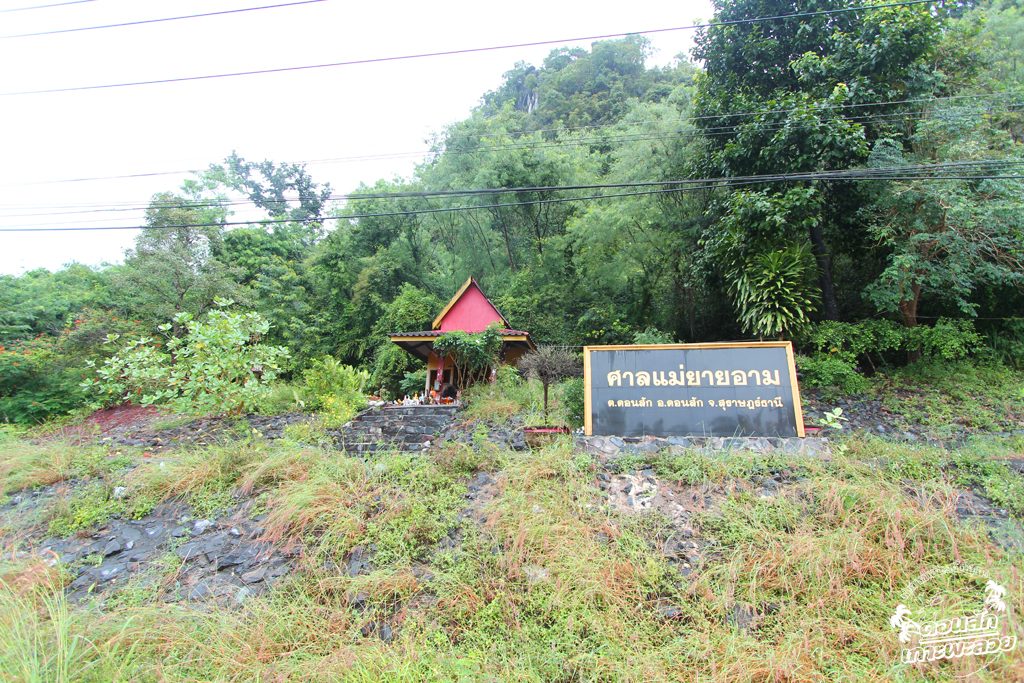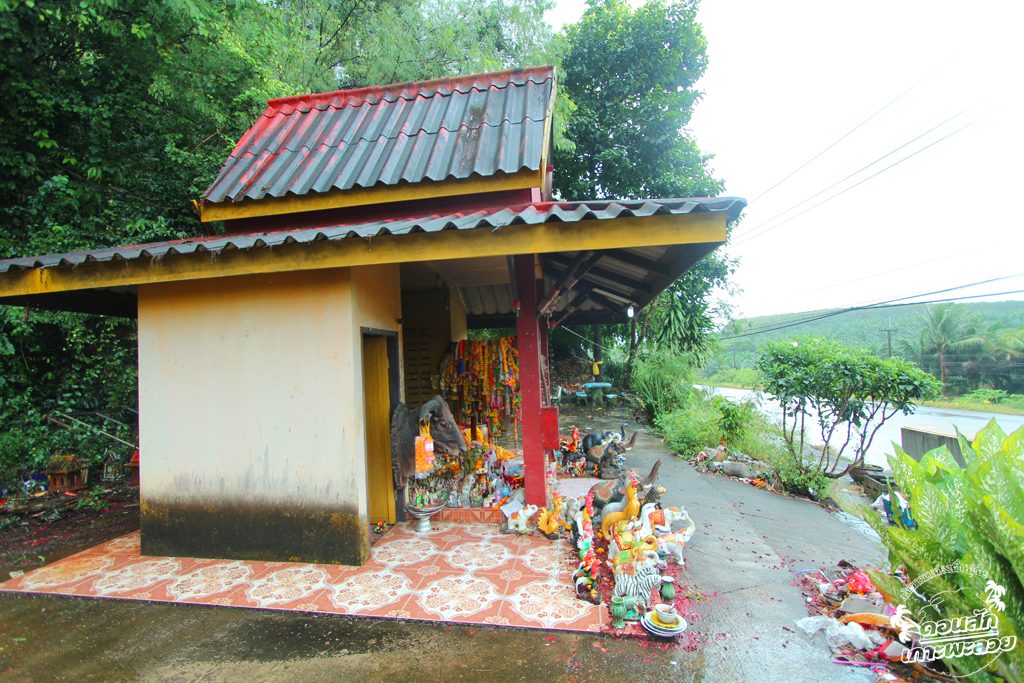Khao Cha-Ngok
Pak Klong Don Sak community, Don Sak District in Surat Thani Province is about 62 kilometers away from Surat Thani city center. There are many community tourist attractions in the area as the places are attached to the main land. One of them is the pagoda of Por Poo Khao Cha-Ngok which is located in Por Poo Khao Cha-Ngok shrine. It the place where the villagers and the fishermen in Don Sak pay respect, worship and ask for the blessing on their work and when they set off for fishing.
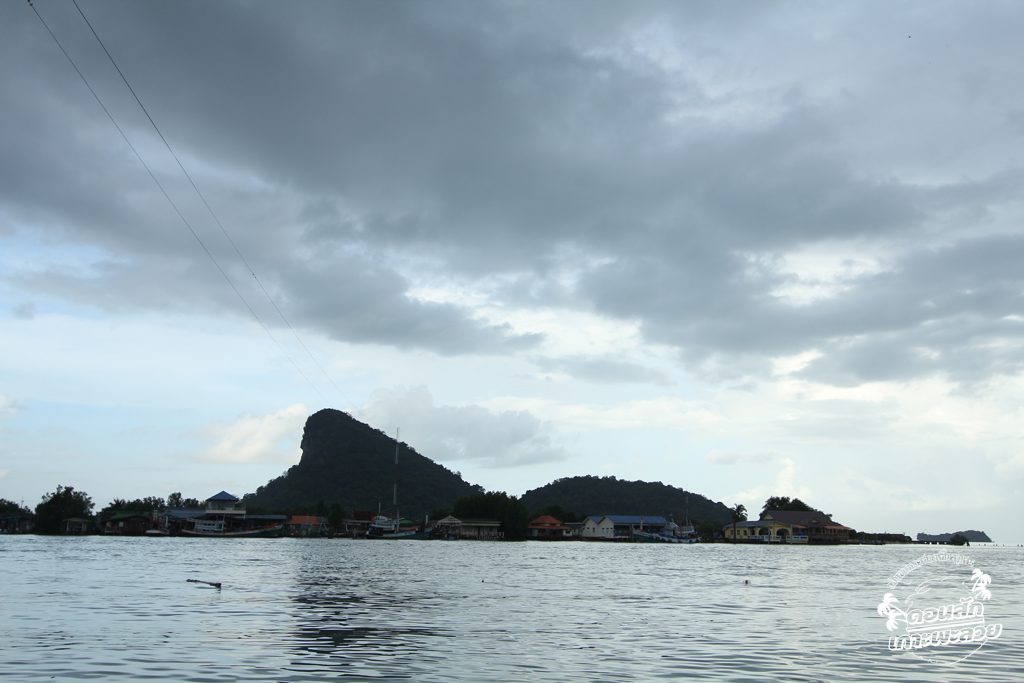
There are 2 ways to get to Khoa Cha-Ngok; either by boat or by car.
- By car, drive to Pak Son Sak School, then take a walk along the walking path to Por Poo Khao Cha-Ngok shrine.
- By boat, take a boat from Don Sak Pier where Khoa Cha-Ngok can be seen in the distance. The fare is 5 baht to get there and 10 baht for a return trip.



Mrs. Petrung, a local officer and Mr. Seb, a village headman offered a boat trip and guided us with information from the pier to Khao Cha Ngok. It took about 10 minutes to get to Khao Cha Ngok.
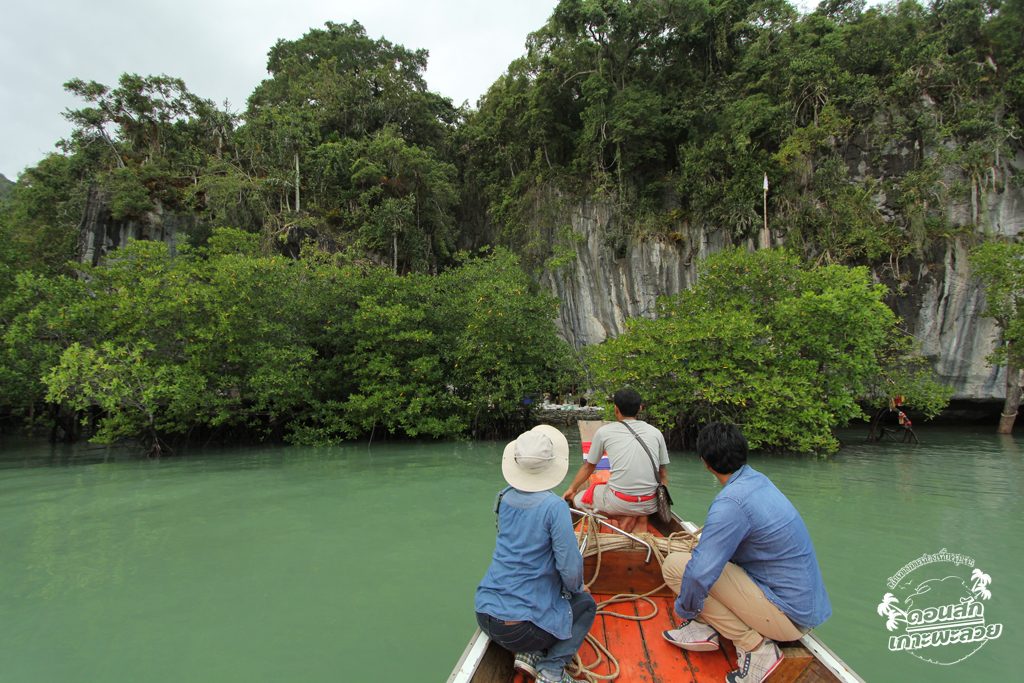
When the boat gets nearer Khao Cha Ngok, we can see a lot of avicenniatrees at the entrance. It is quite difficult for strangers to see the entrance.We notice that the color of the sea is a light blue-green. Khao Cha Ngok is a limestone mountain shaped like a triangle with a round, slightly curved top.


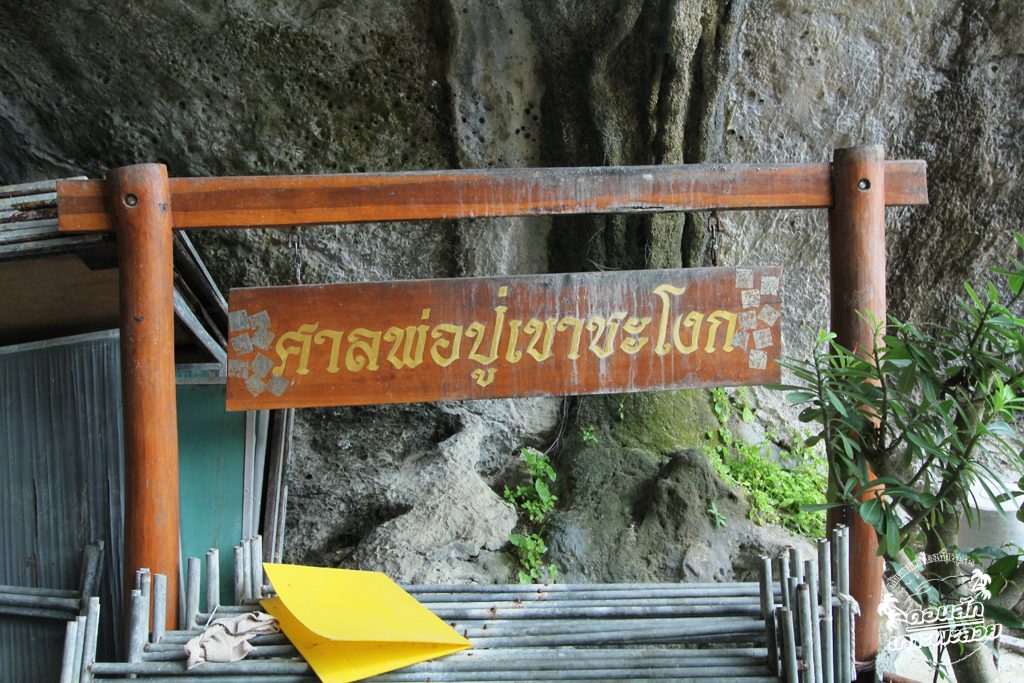
There is a sign at the pier saying that the shrine is on the right-hand side. Looking into the cave, which is not too deep, there is a rock and a statue of Por Poo. All the villagers and the fishermen in Don Sak and nearby areas pay respect, worship and ask for good fortune before setting of the sea.




There is a small path from Por Poo Khao Cha Ngok Shrine along the beach leading to the Dragon Cave, Pig Cave, Bat Cave and Bird’s Nest Cave. This path is also leading to Ban Pak Don Sak School.
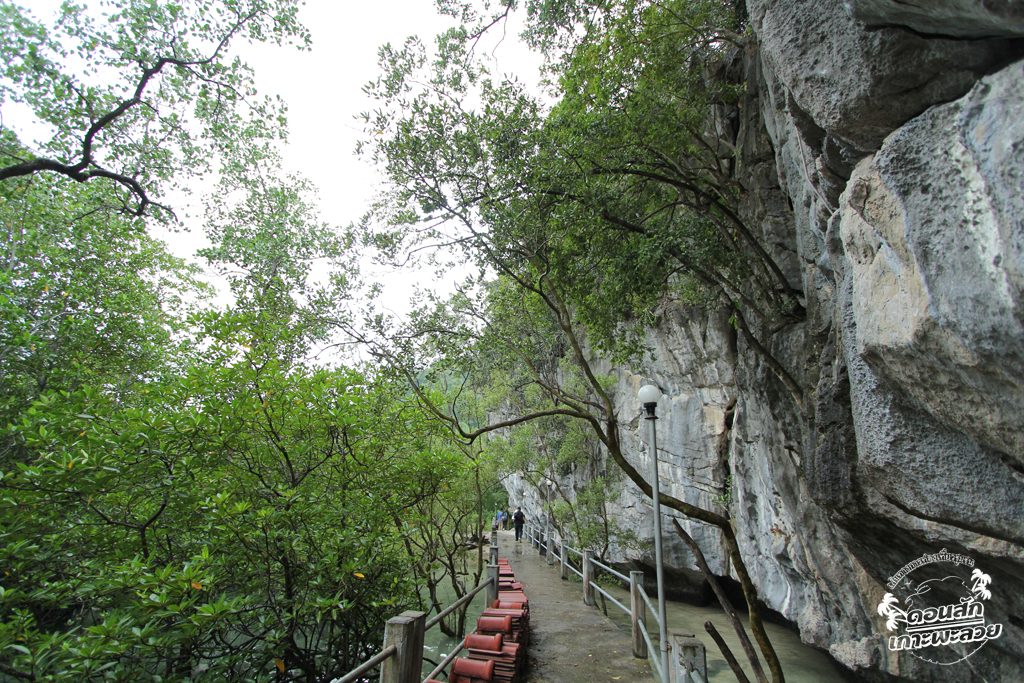
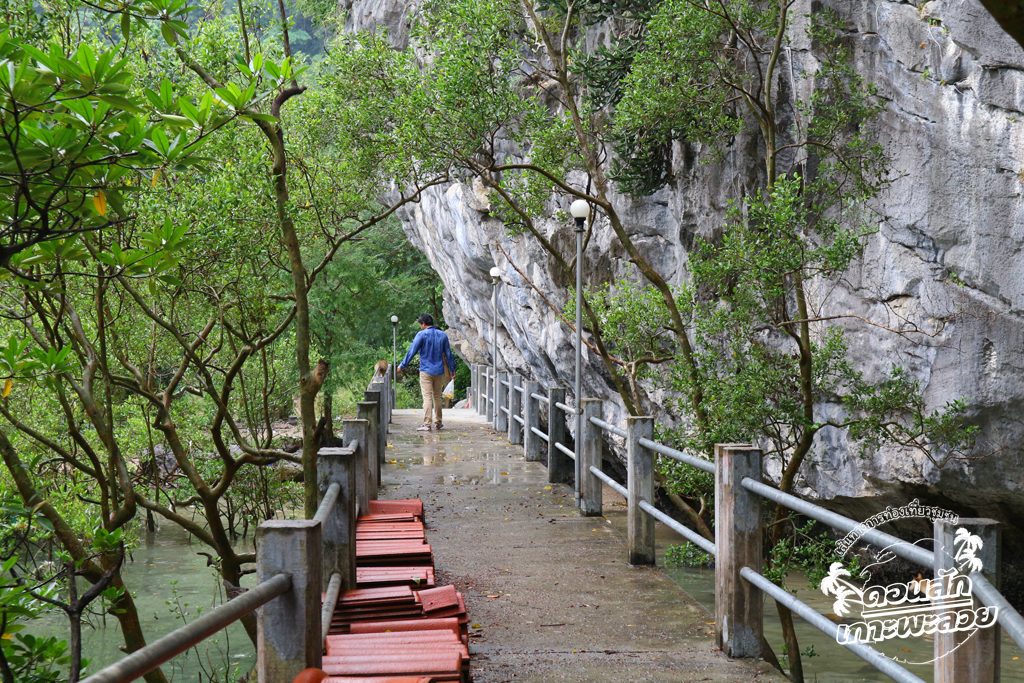
On the way along the path, there are many troops of monkeys enjoying their lives in the trees. Those monkeys are friendly and love to be fed with bananas.



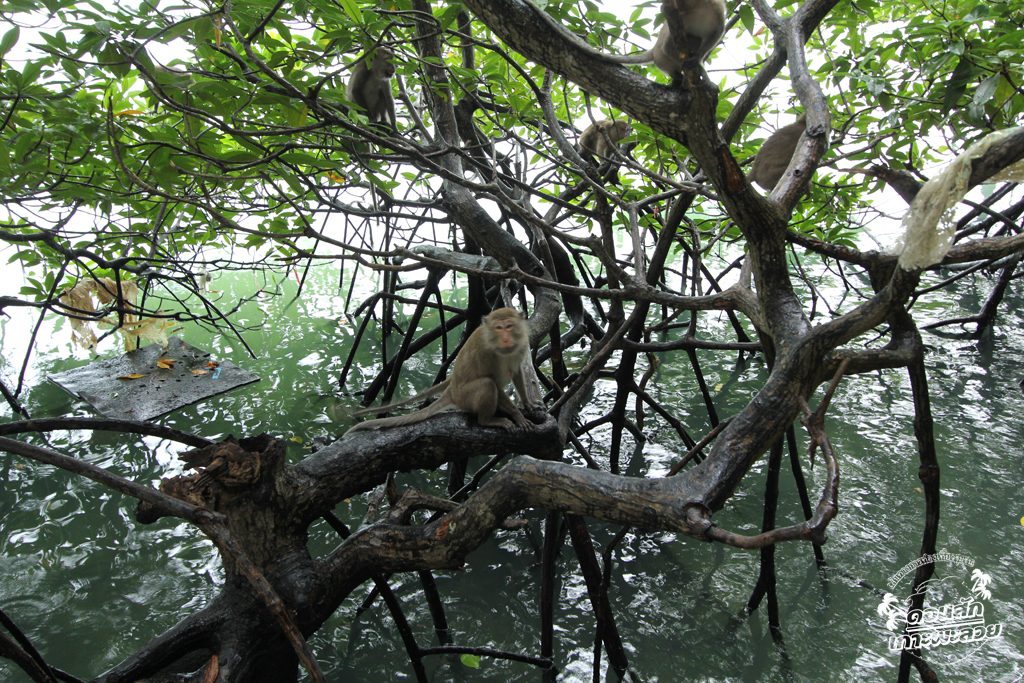
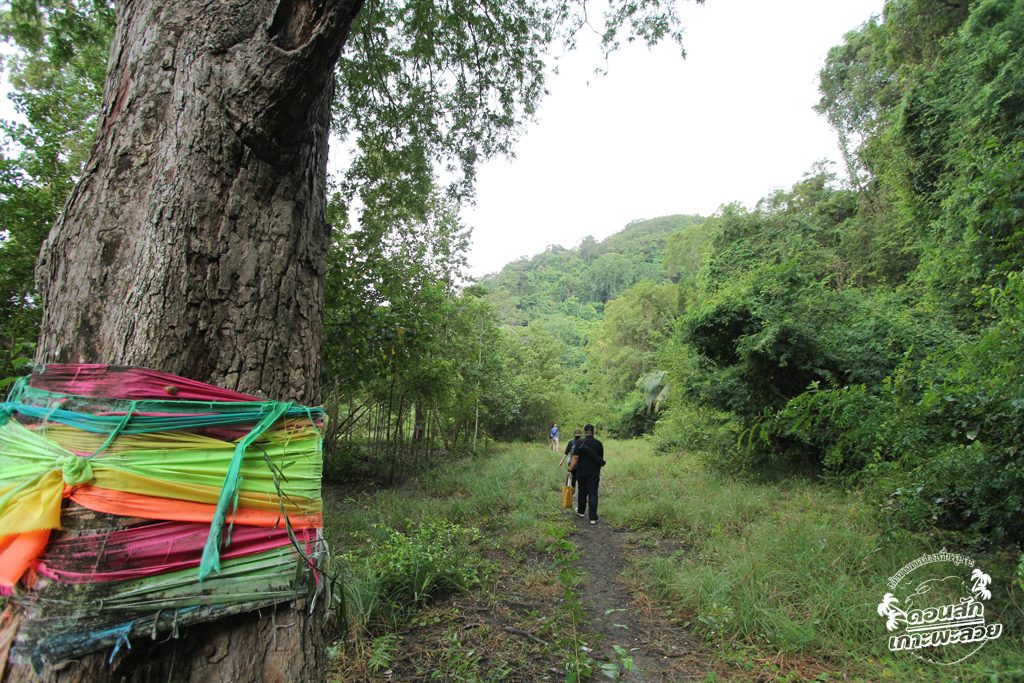

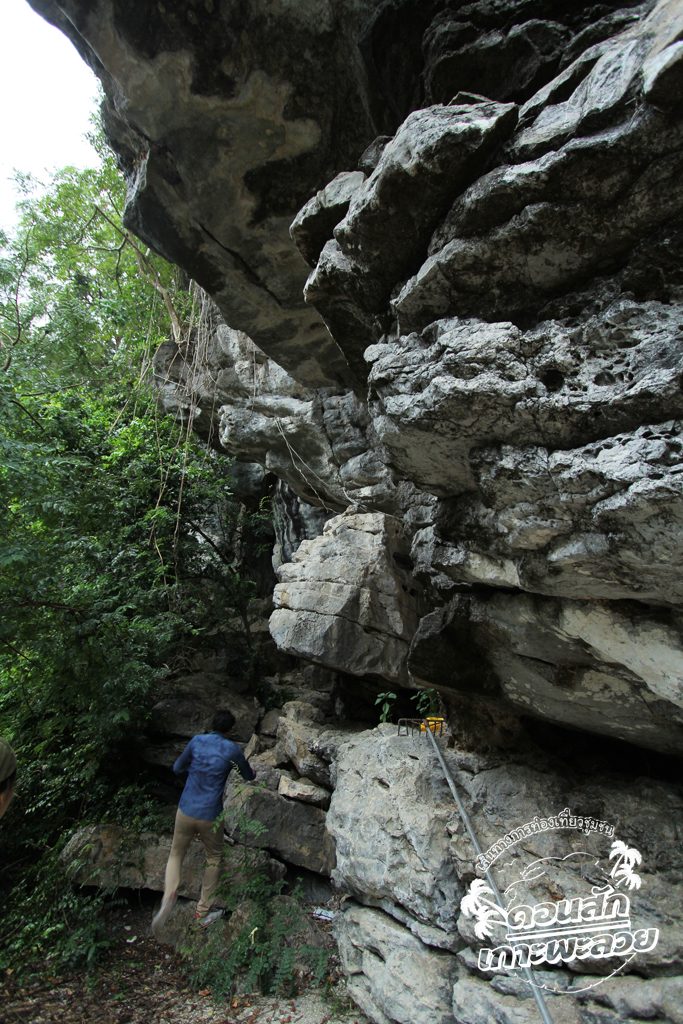


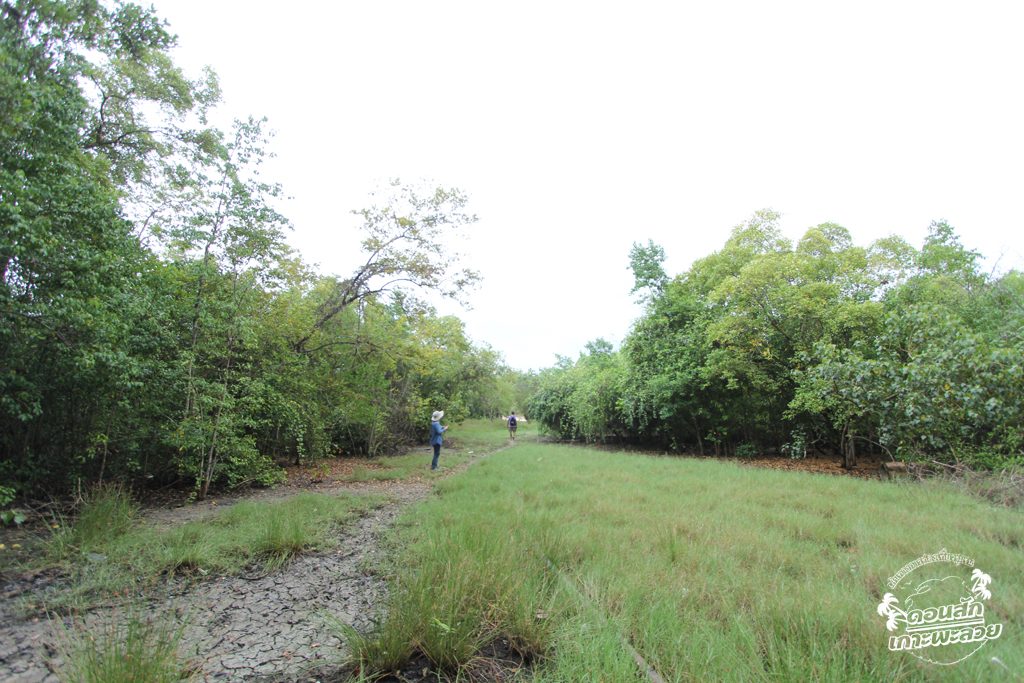
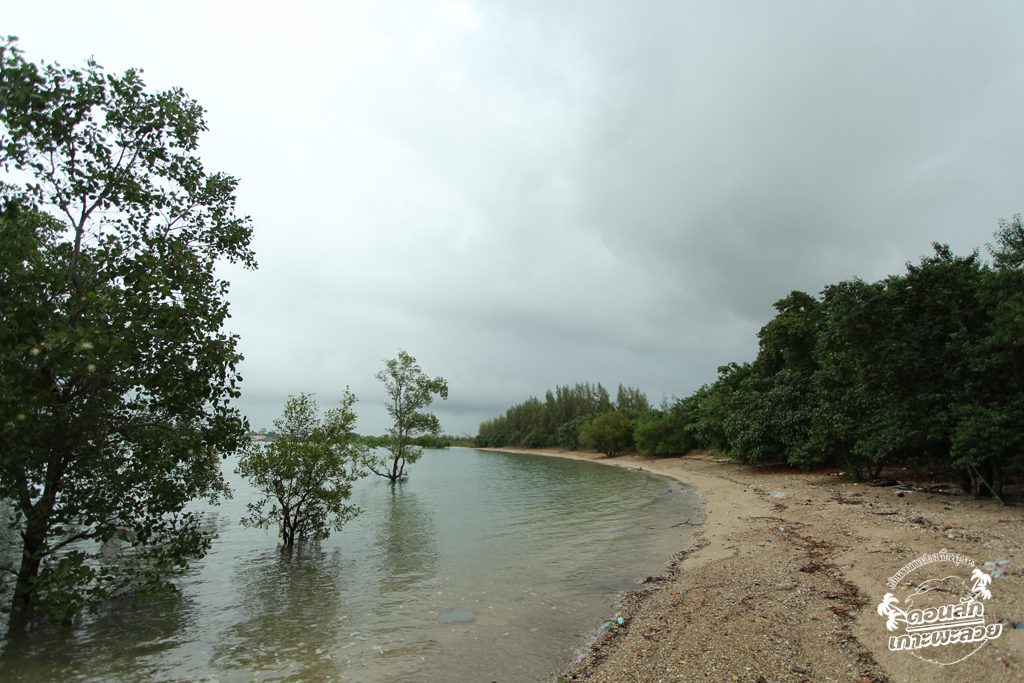
Wat Khao Suwan Pradit
After worshipping and paying respect to Por Poo Khao Cha Ngok, it’s time to get back to the pier to leave for Wat Khao Suwan Pradit. This place was built as a temple by Pra Kru Suwan Pradittakarn, one of a famous monks in the south. The temple itself was established in 1982 on the top of the mountain which was originally called “Wat Khao Lan”. The relics of Lord Bhudda which was taken from Wat Prakeit, Sod District in Chieng Mai was put on top of the pagoda. There is a big festival when people gather big pieces of yellow robe to bring to the pagoda on the 15thof January annually.
How to get Wat Khao Suwan Pradit The place is about one kilometer away from Don Sak Community which is on route No. 401 (Surat Thani – Nakorn Sri Thammarat)

There are about 185 steps leading to the top of the mountain where the pagoda is situated. People are coming to pay respect to the relics of the Lord Buddha. There is also a small road going up the mountain with a limited car park available (only for 4-5 cars) just behind the pagoda. Walking up the mountain by steps is recommended. It’s quite challenging and also good for exercise.


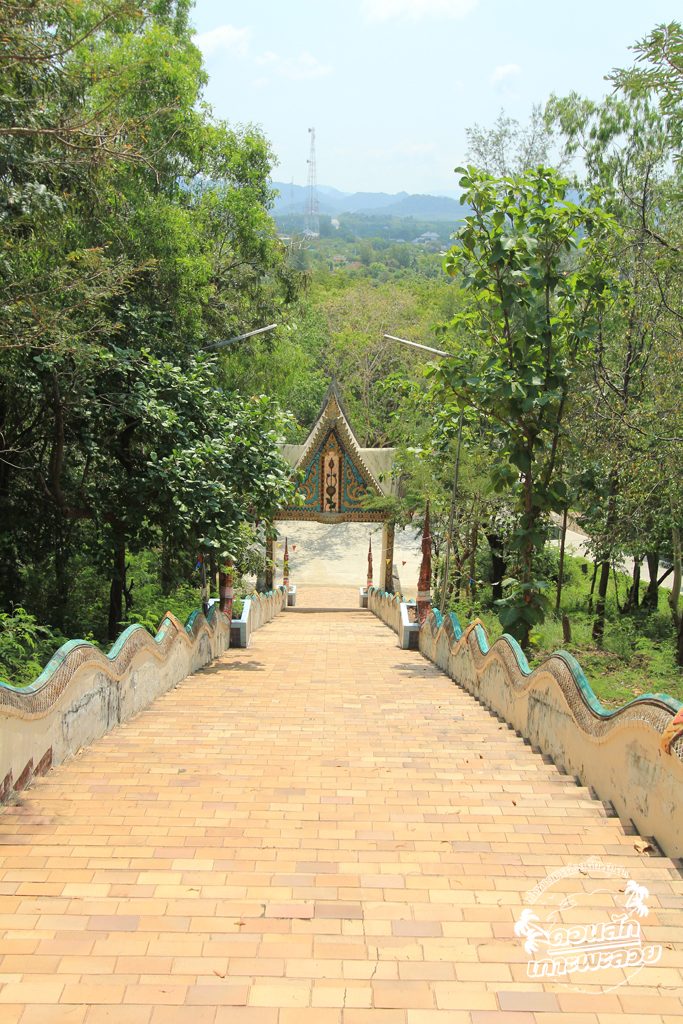

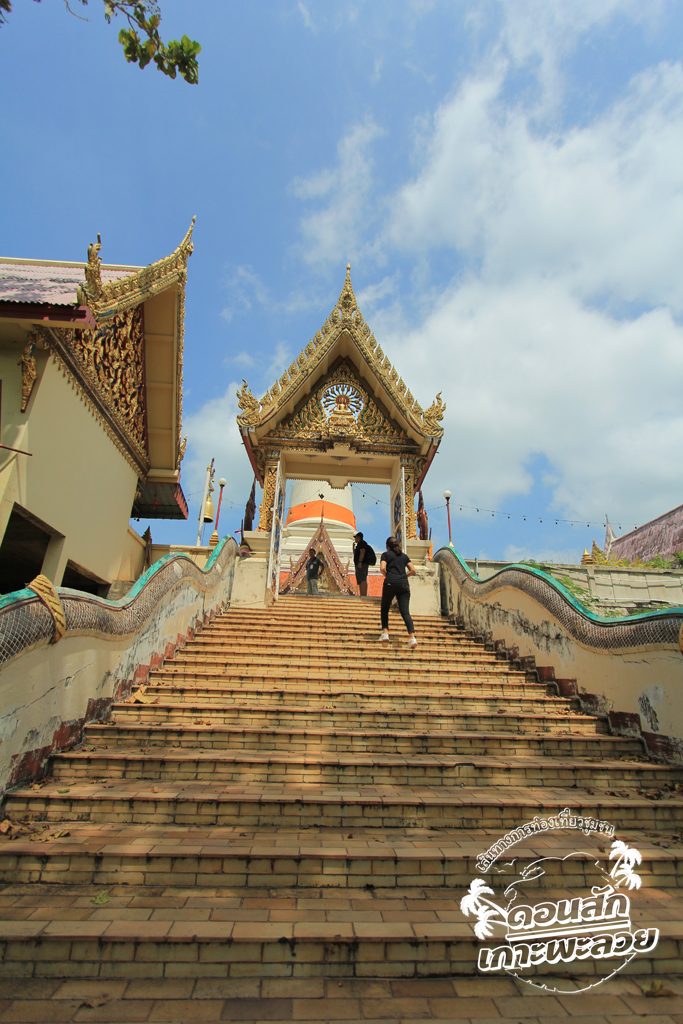
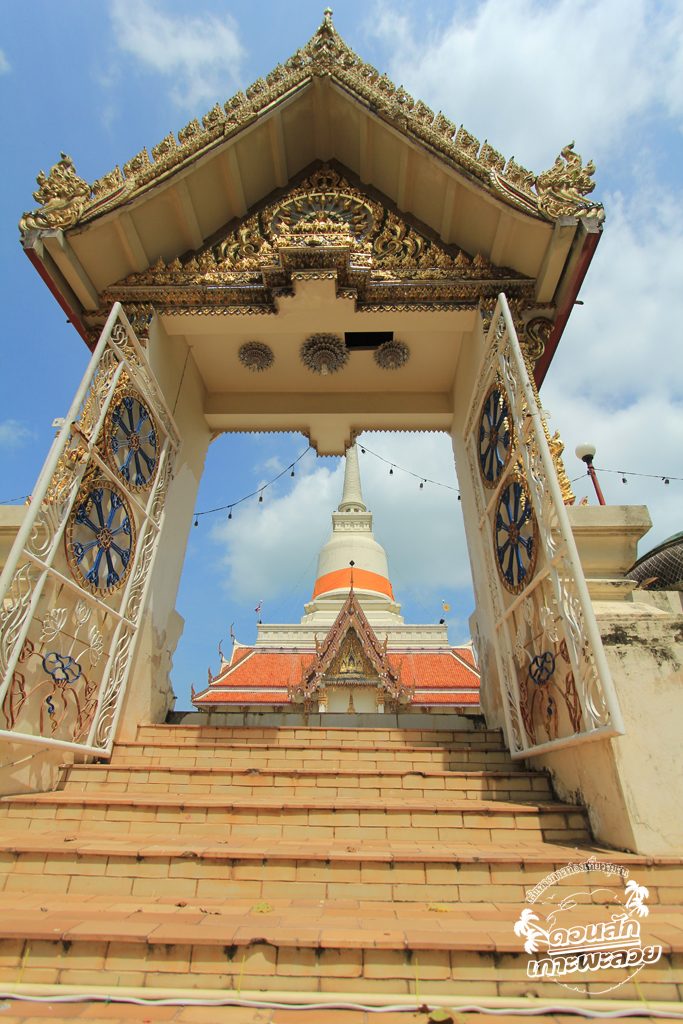
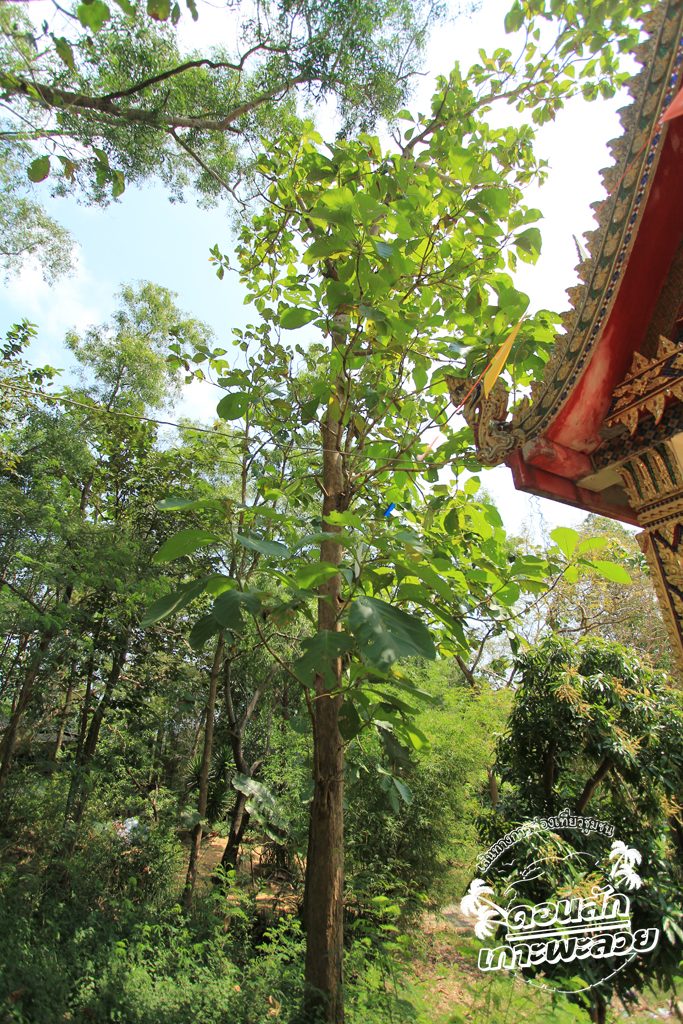
On the way up to the mountain top, a story about the teak timbers was told that the head of the monks and the villagers were gathering together to grow the teaks.There were quite a few trees up on the mountainin the old days which is why it is called bold mountain.
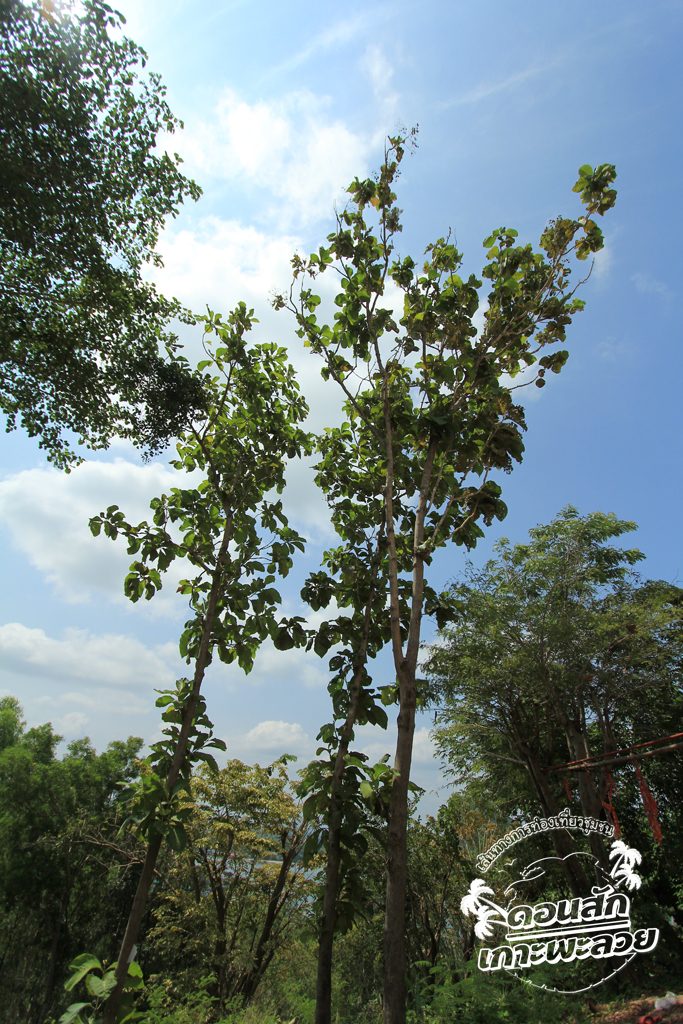
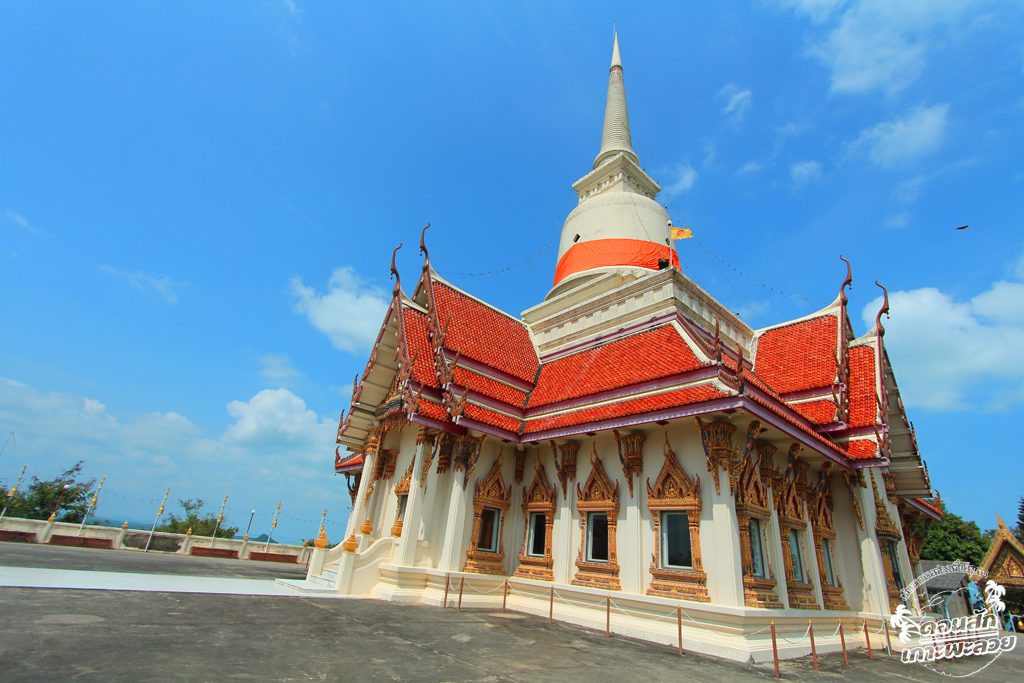
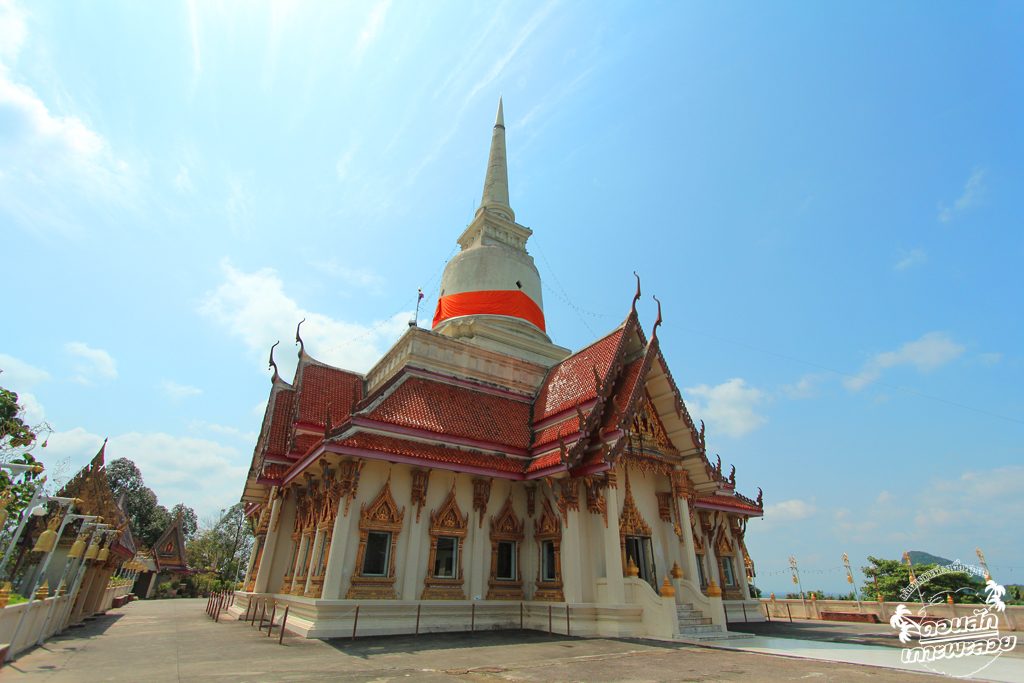
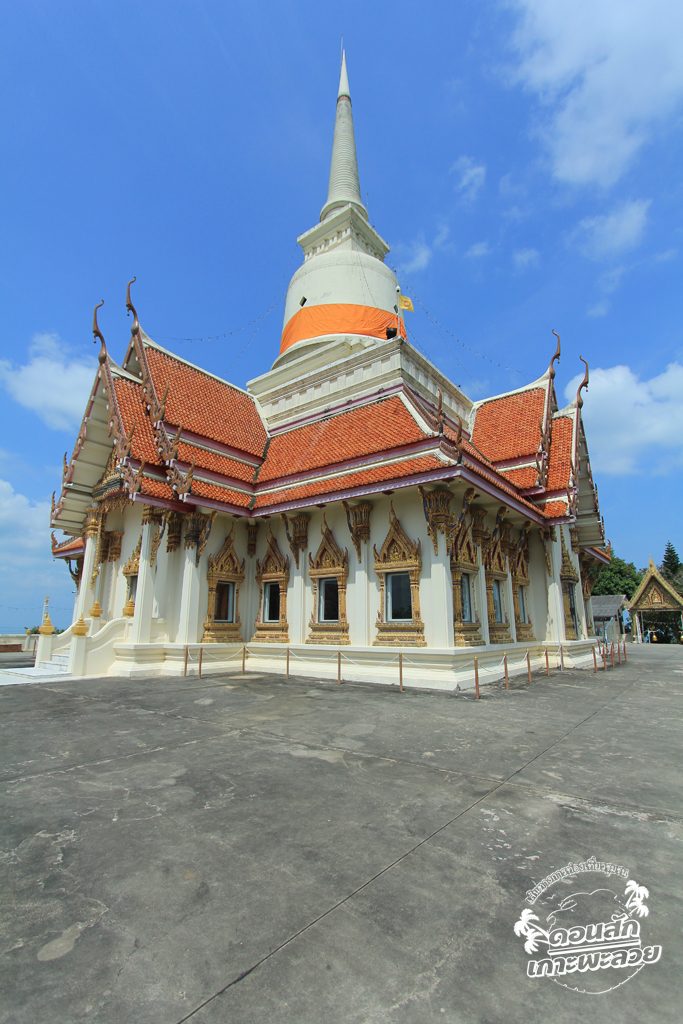
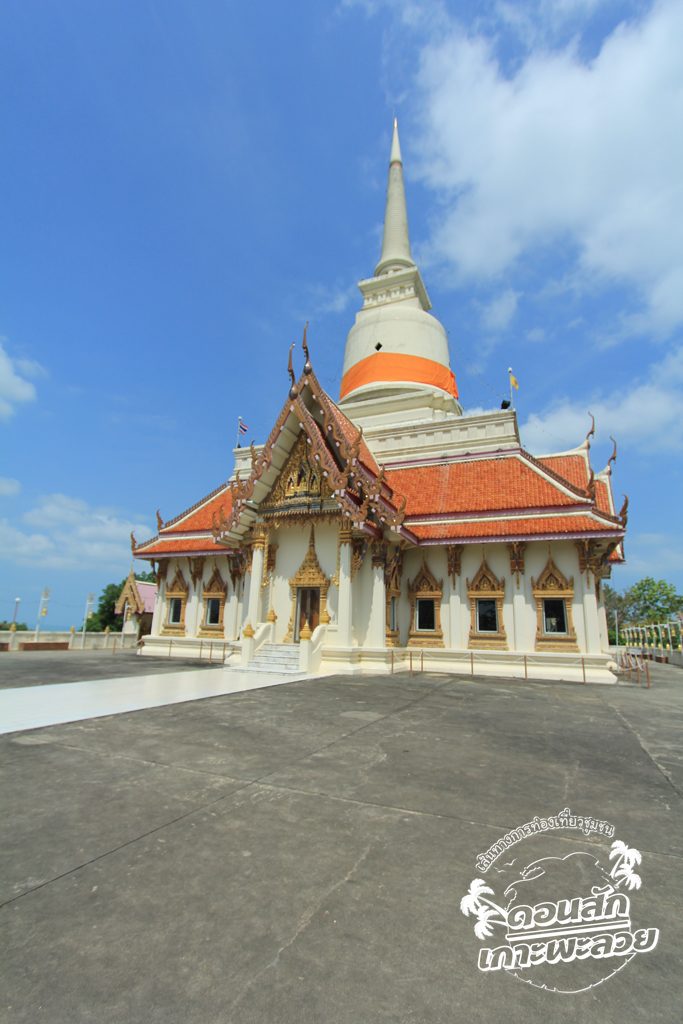
There is a shrine at the end of the steps where people pay respect on the left-hand side. It is believed that the spirit of Por Ta Khao Lan is enshrined. The fishermen in the village usually come with fresh flowers to pay respect then take the old ones back to put on their boats.
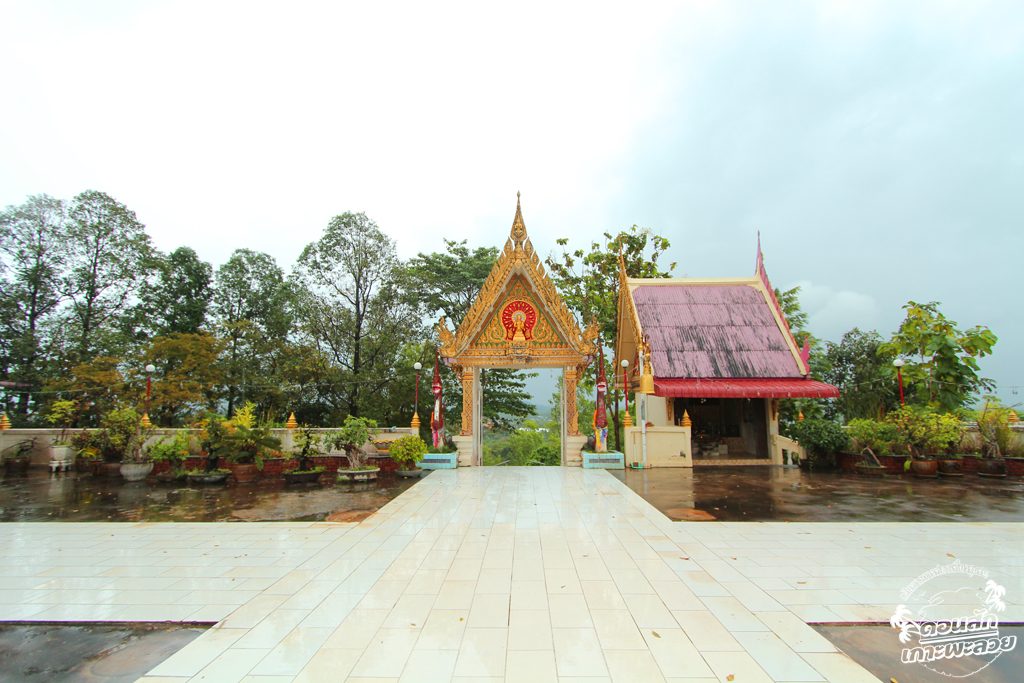

Before entering the pagoda to pay respect, asking for good fortune is always made at Po Tan Yod Khao.
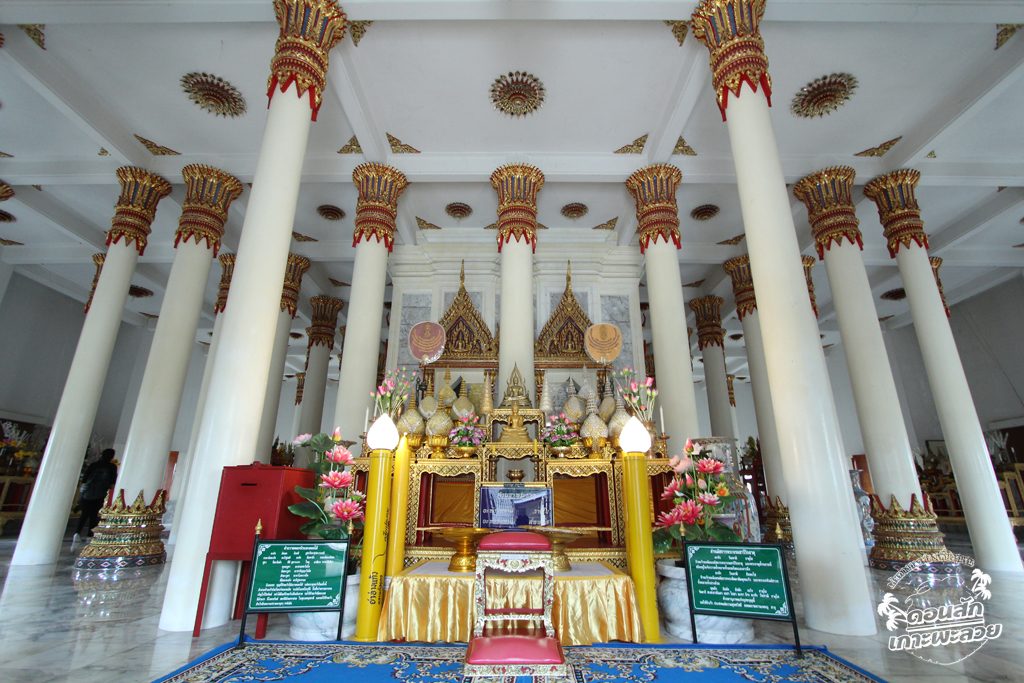
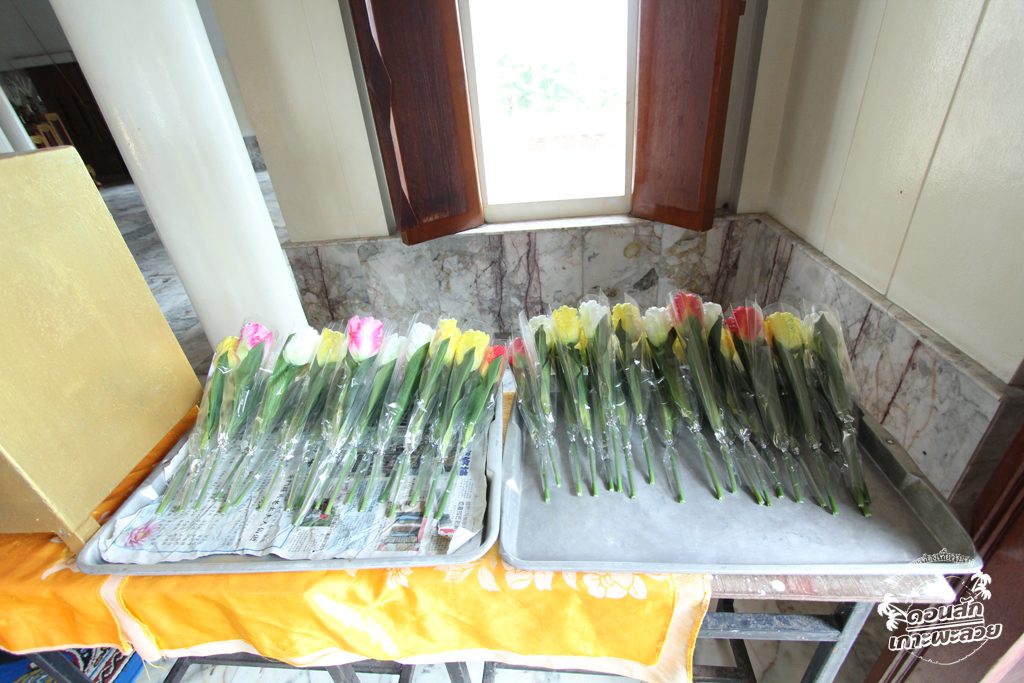
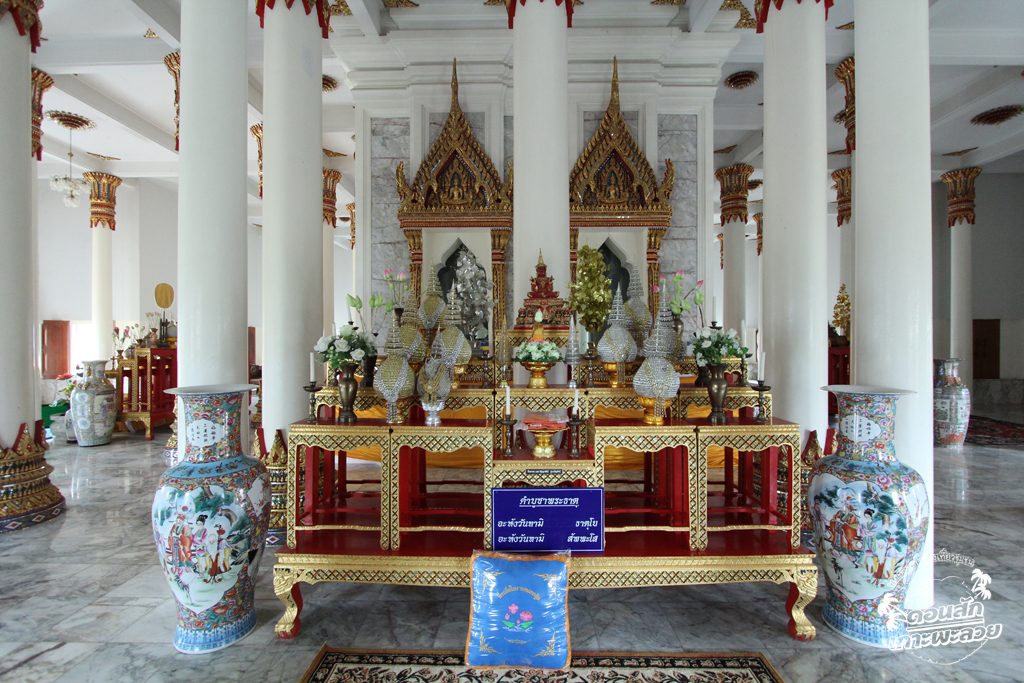
We were told that Her Royal Highness Princess Chakkri Sirintorn once visited this pagoda on 20th September 1983 to lay the foundation stone and presided over the ceremony of raising the pagoda top.

There is a pole which was used for raising the pagoda top placed behind the pagoda.

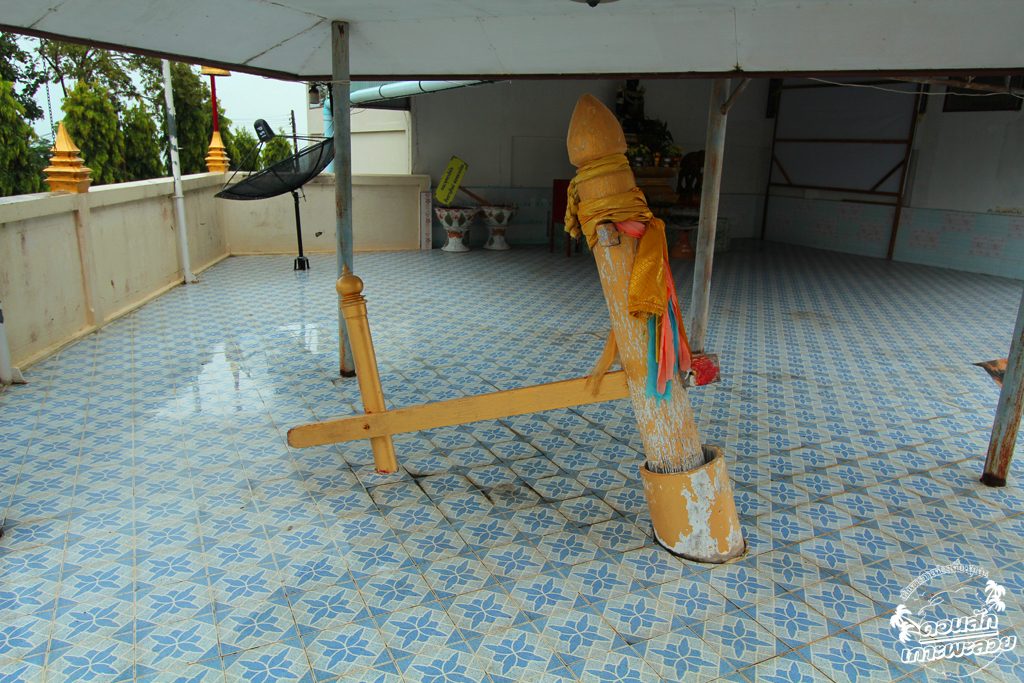
Loung Por Joy Hall (Pra Kitimongkolpipat)
After paying respect to the Lord Buddha relic on the mountain top, we walk down to the bottom where there is a hall of Loung Por Joy (Pra Kitimongkolpipat). The hall itself is located in the area of Wat Khao Suwan Pradit. The biography of Loung Por Joy can be found in this hall. The story is that he became a monk on 10 December 1947. He had been awarded a high rank and title by his Majesty the King on 5 December 1987. During his time as a monk, he did a lot of community development such as building a road from Don Sak to Khanom, bringing the generator to produce electricity for the village, contacting the Ministry of the Interior to drill a well for water. With the support of King Rama 9, the village then had a running water supply. In 1982, he brought a Lord Buddha relic from Wat Prakeit in Sod District, Chiang Mai Province to put on top of the pagoda. There is a ceremony of bringing the big robe up onto the pagoda on 15 February every year. He also built the statue of Princess Wipawadee Rungsit. His Majesty the King, Her Majesty the Queen and the royal family presided over many activities organized by the temple.
Pra Kitimongkolpipat died on 15 February 1993 at the age of 89 years. He stayed as a monk for 12 years 6 months. Her Royal Highness Princess Sirinthorn had presided over his funeral ceremony and the making of his golden statue on 16 February 1997.
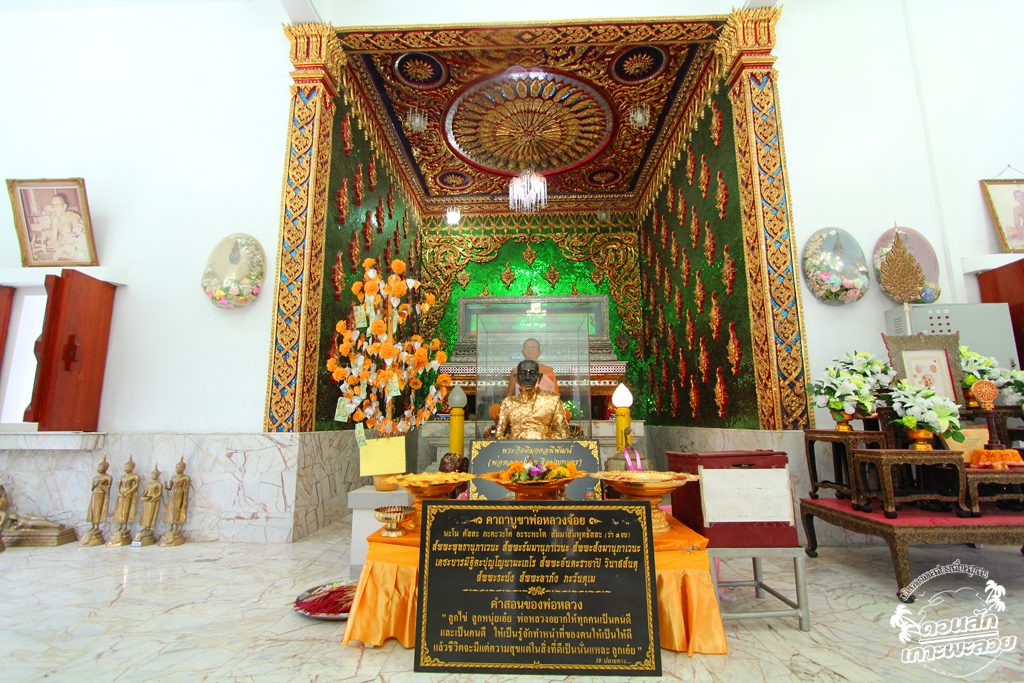
Stone Fish Museum
Mr. Kitti Sin Udom, who is originally from Petchaburi Province, has come down to live in Surat Thani as a fisherman. He has been very keen on fishing since he was young and knows a lot about fish and other sea creatures.
Mr. Kitti has realized that many kinds of fish and sea creatures are have become very scarce and may be extinct in the future. He himself is a conservative person and loves the art of carving. Therefore, he began carving stone in the shape of different kinds of fish and rarely found sea creatures. He wants people in the next generation to be aware of the conservation of fish and sea creatures. He has collected a lot of his carved stone fish in a museum at his home which is open to the public. This is also considered part of the ecotourism of Surat Thani Province.
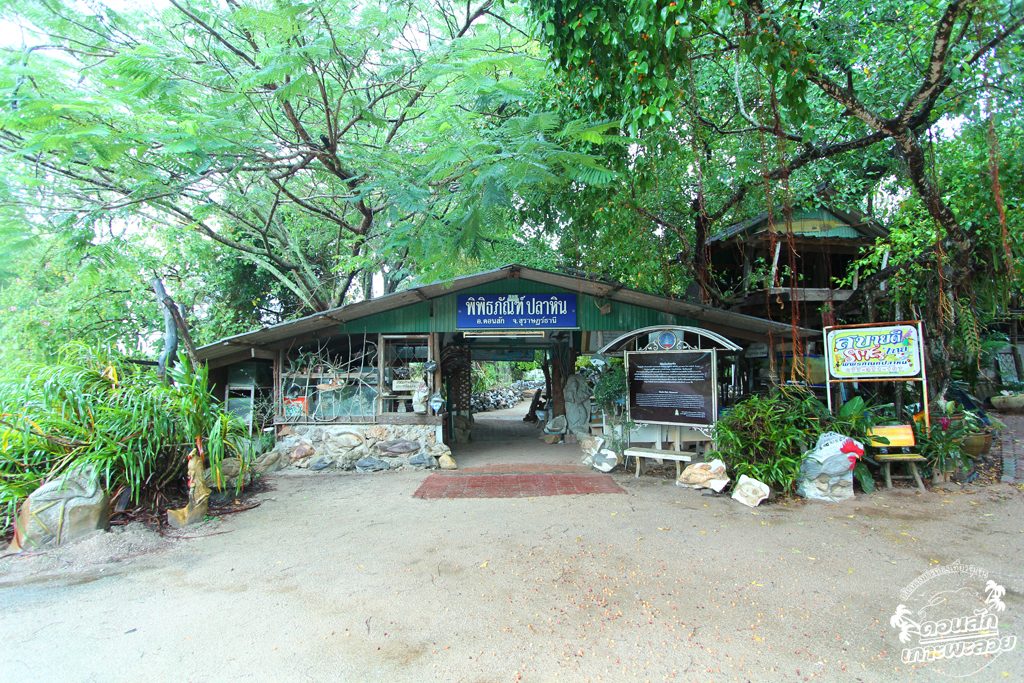
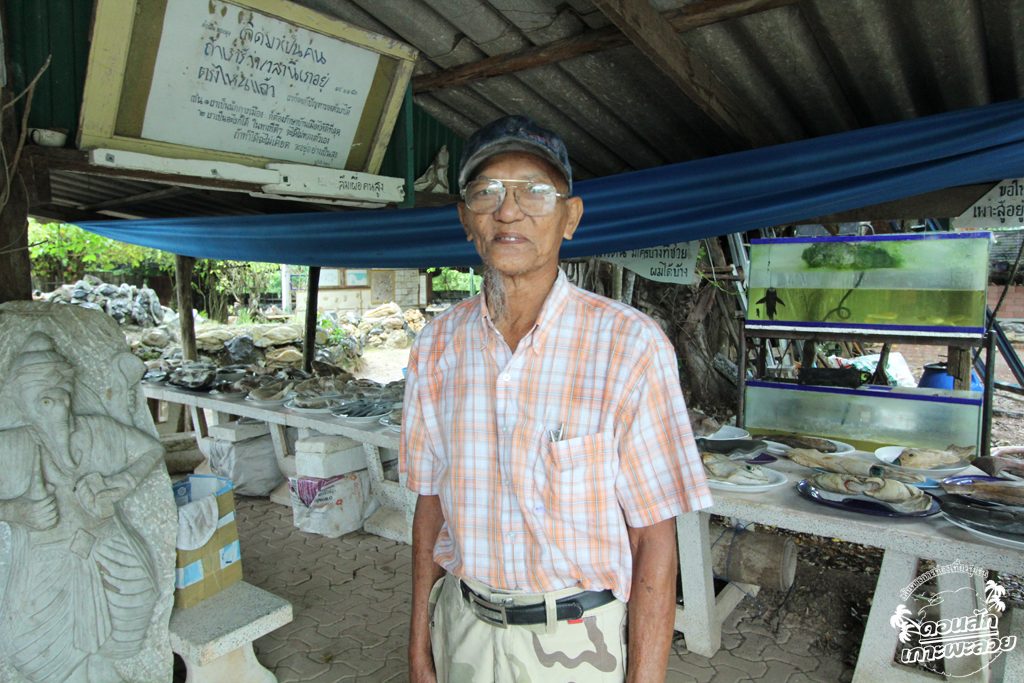


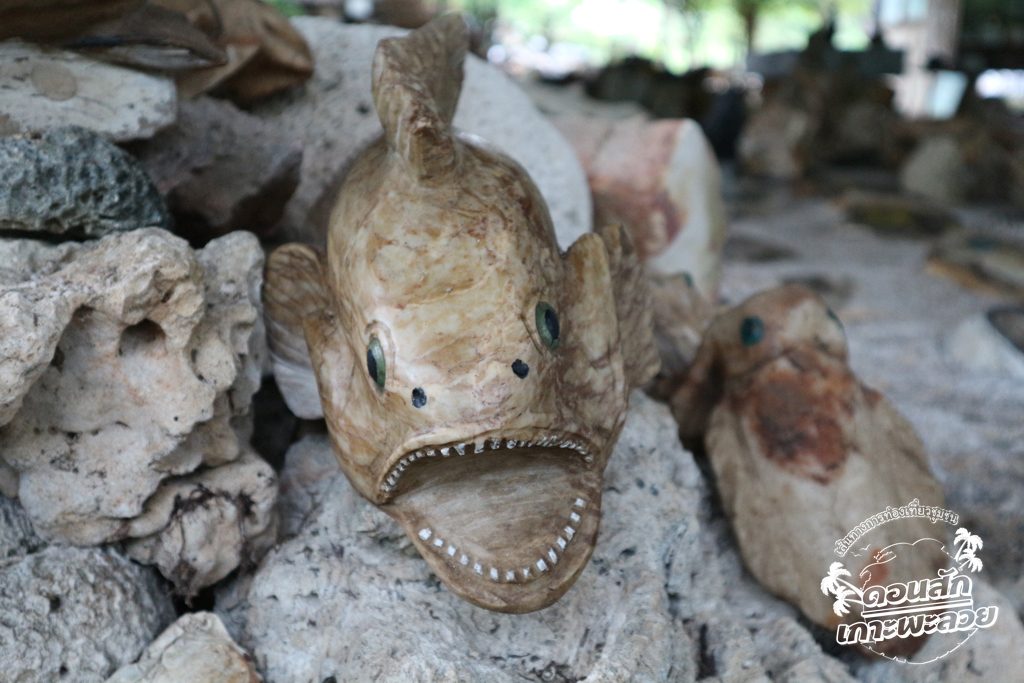
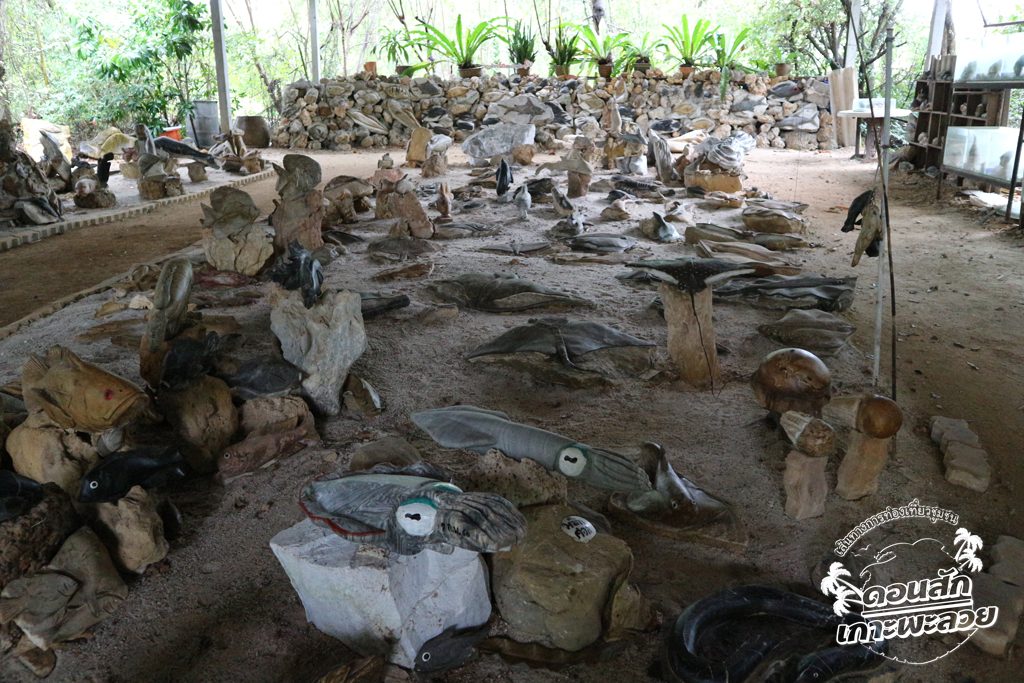
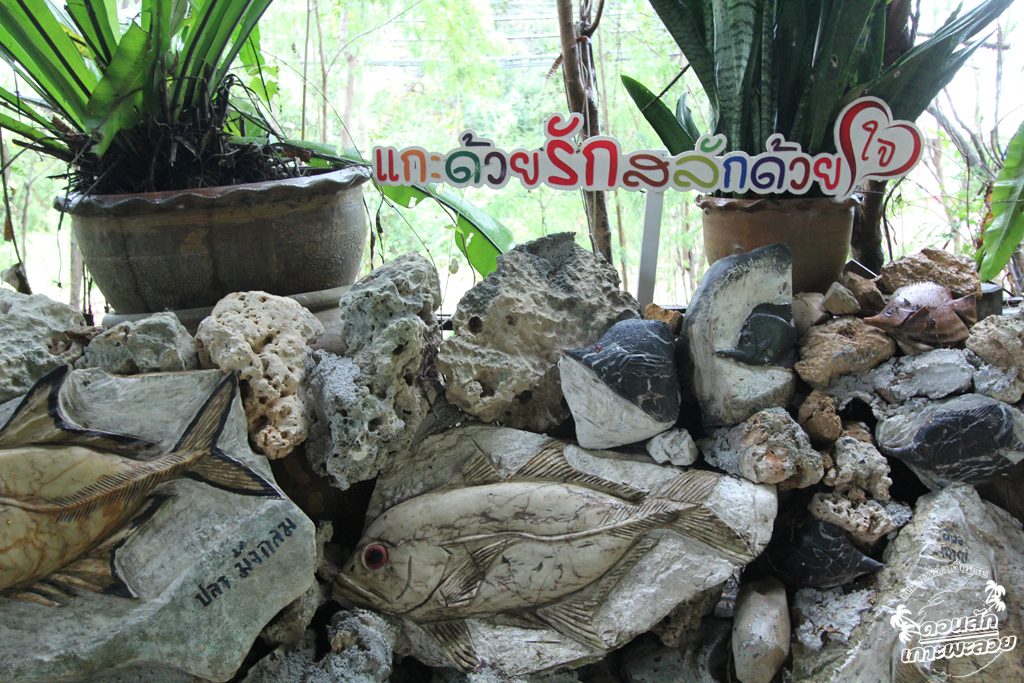
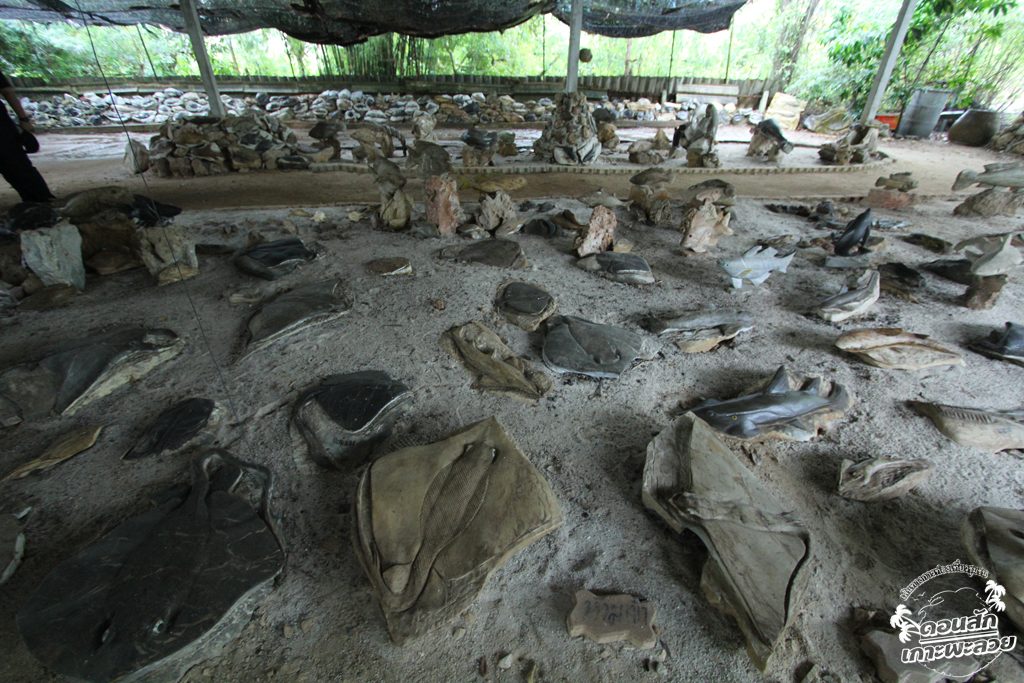
Wang Hin
Wang Hin beach is one of the tourist places which should not be missed. It’s located at Leam Tood Beach in Village no. 5, Don Sak Sub-district, Don Sak District, Surat Thani Province. It is 62 kilometers from Surat Thani city center. The place is not far from Don Sak Pier which is in Don Sak municipality area. The beach is full of different beautiful rock formations. A small park is also within the area where people can come to relax and enjoy the scenery. Statues of different styles of Thai costumes from the previous eras are displayed in the park as well.
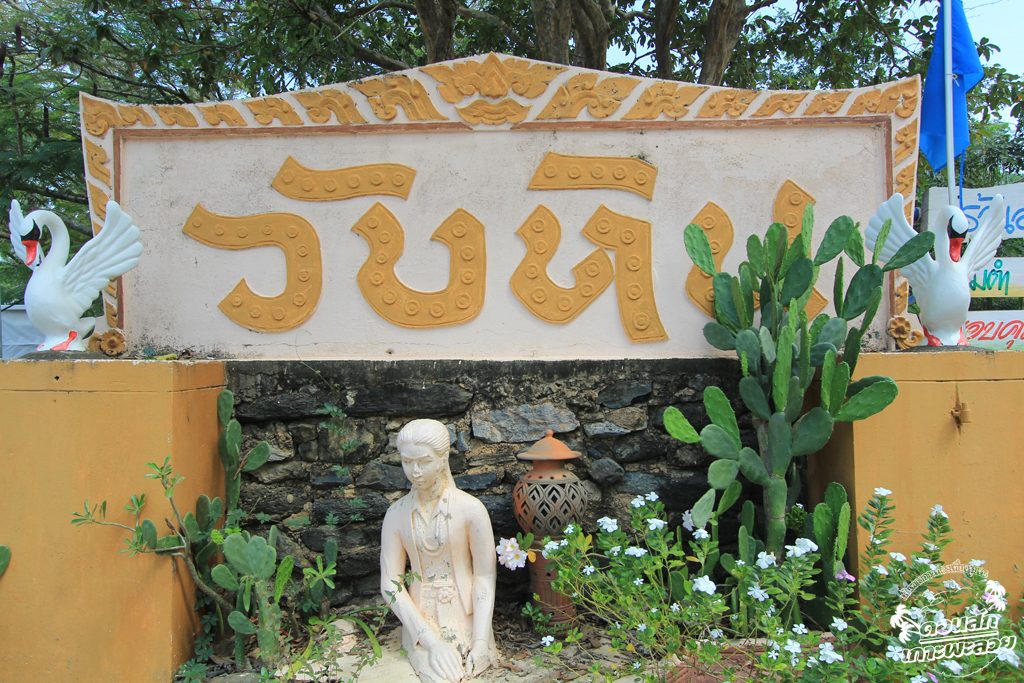

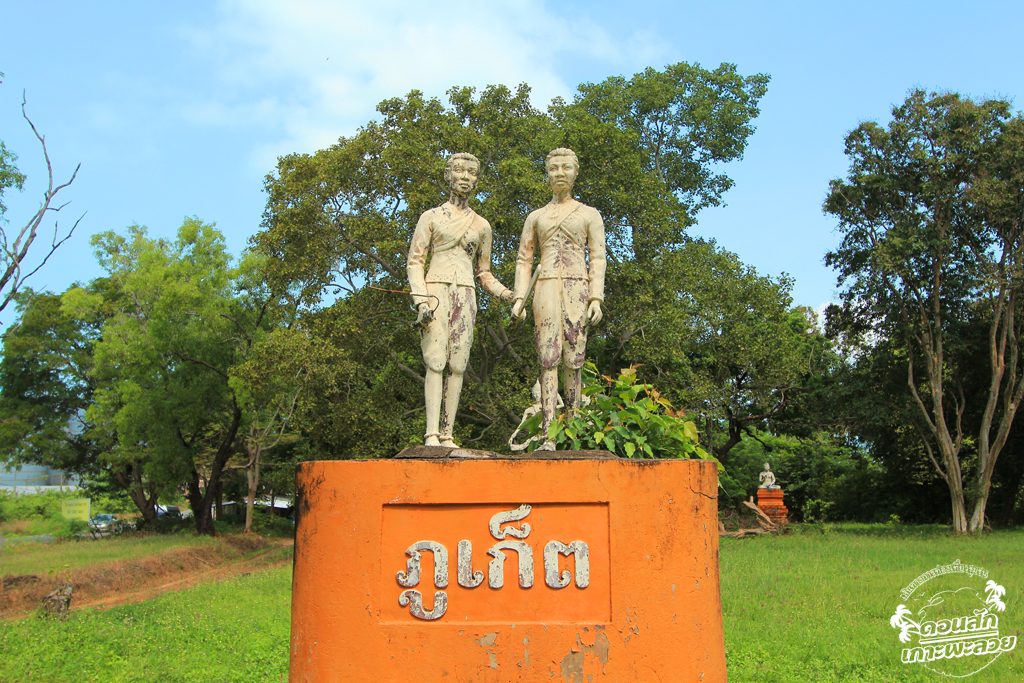
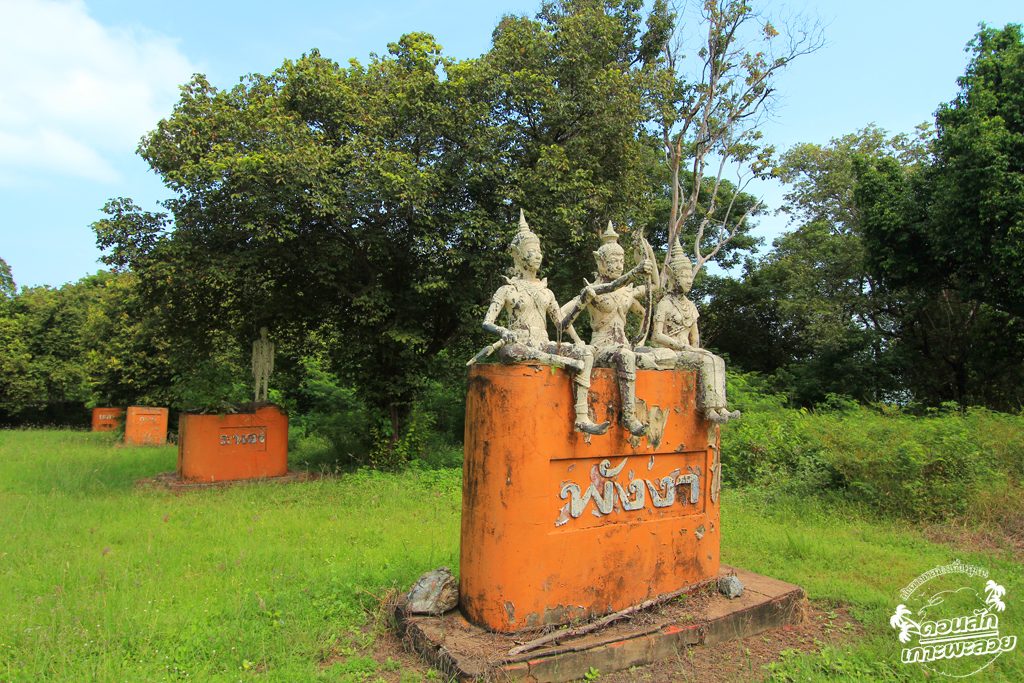
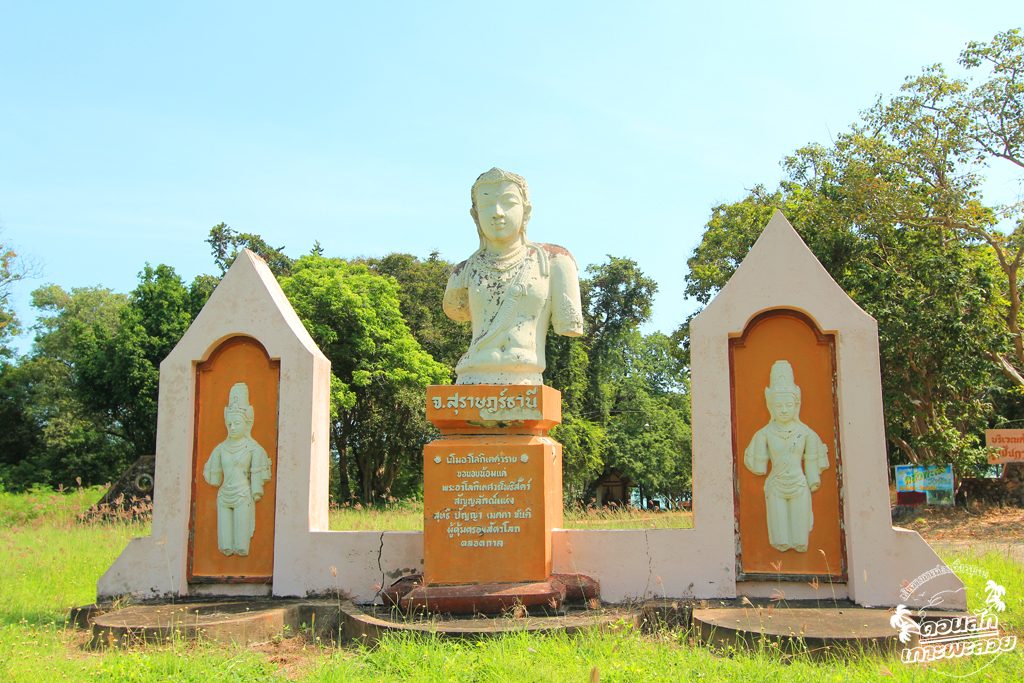
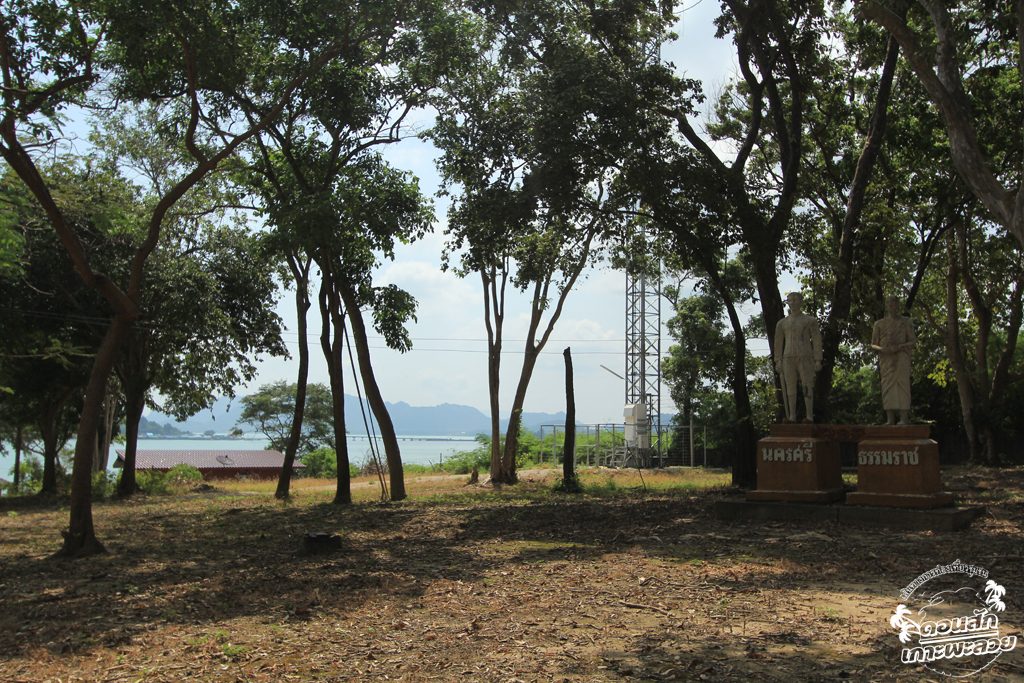
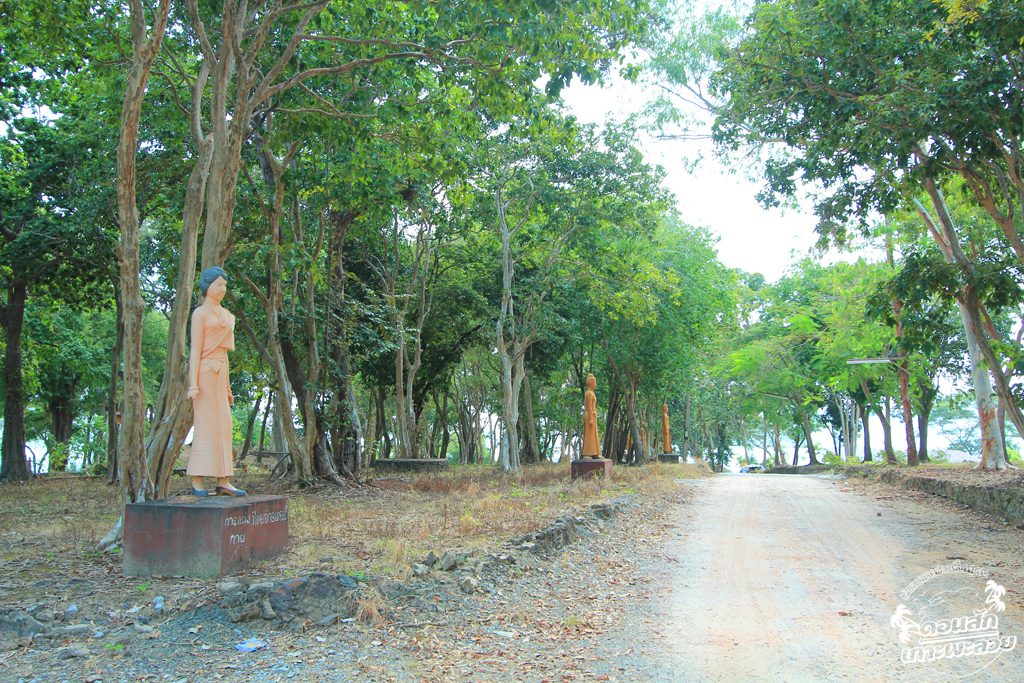
Leam Tood Cape
Don Sak Pier (Leam Tood) is also a nice place to relax and enjoy the fishermen’s way of life. There is a sitting area available for watching fishermen in the sea. Dolphin watching can be done at this point.
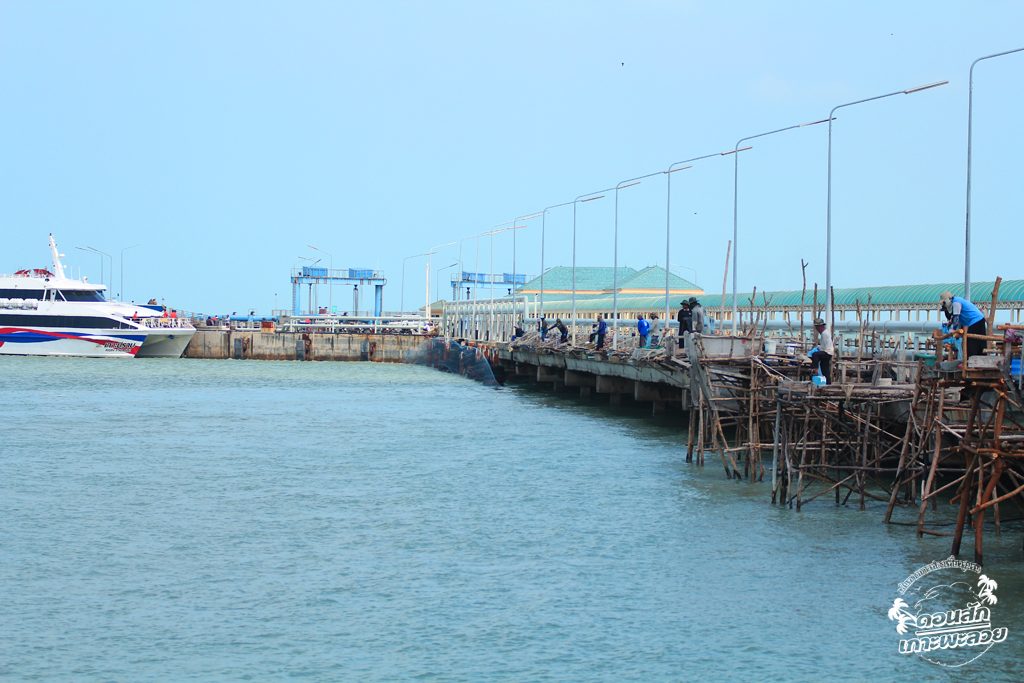
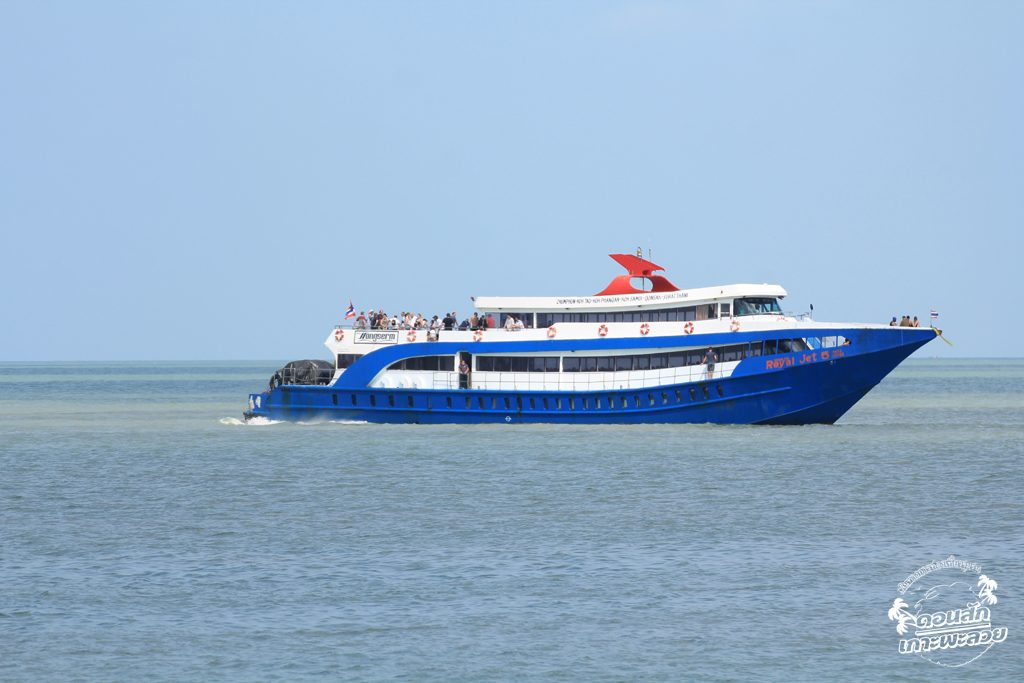
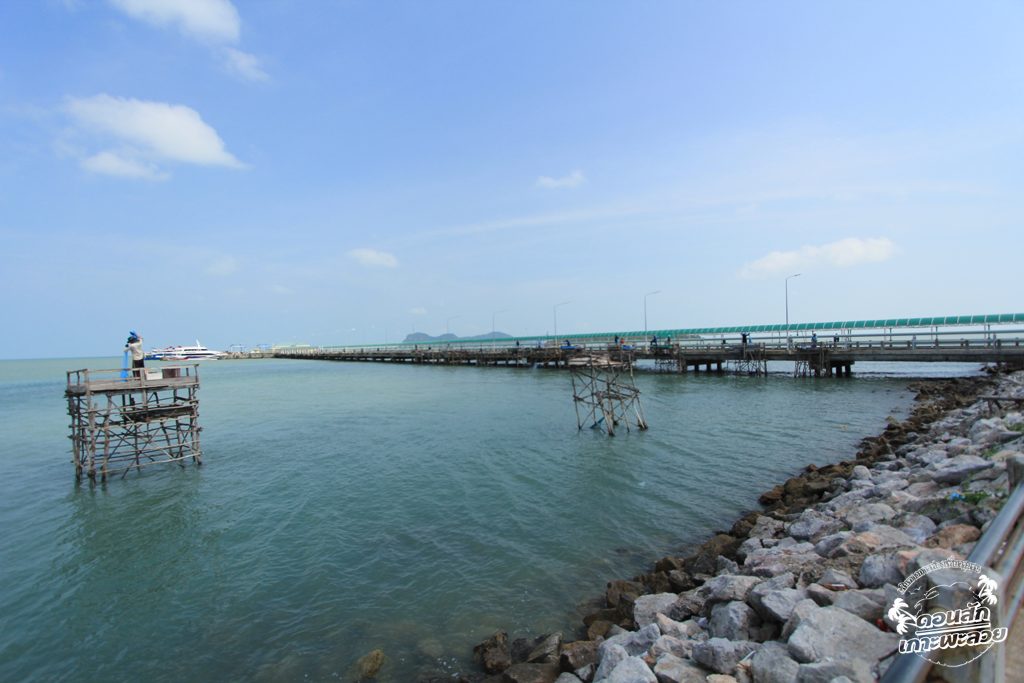

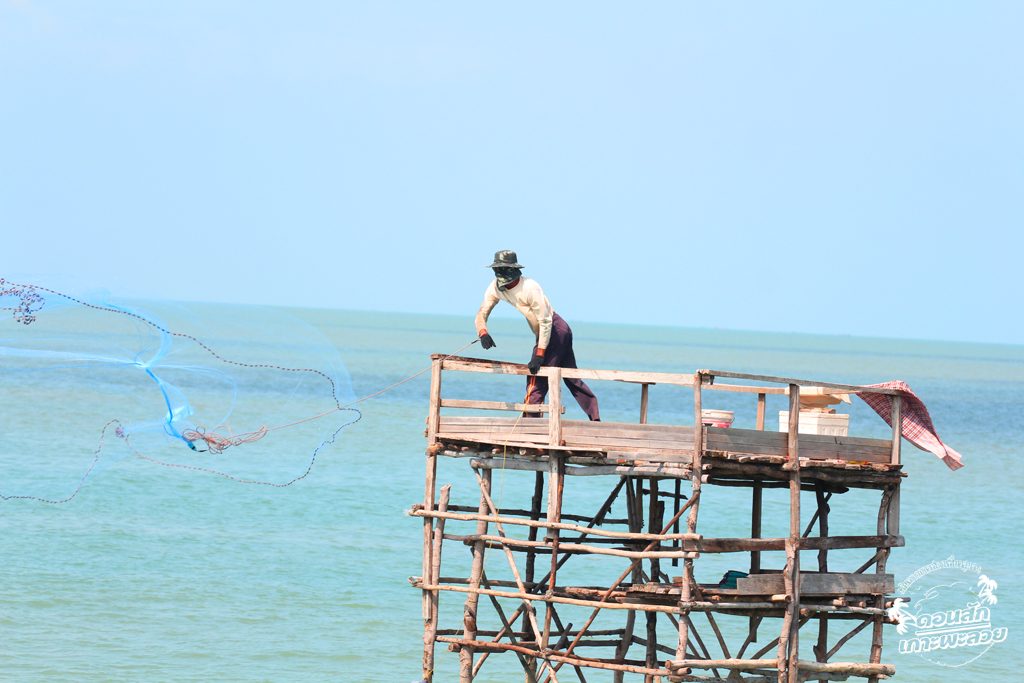
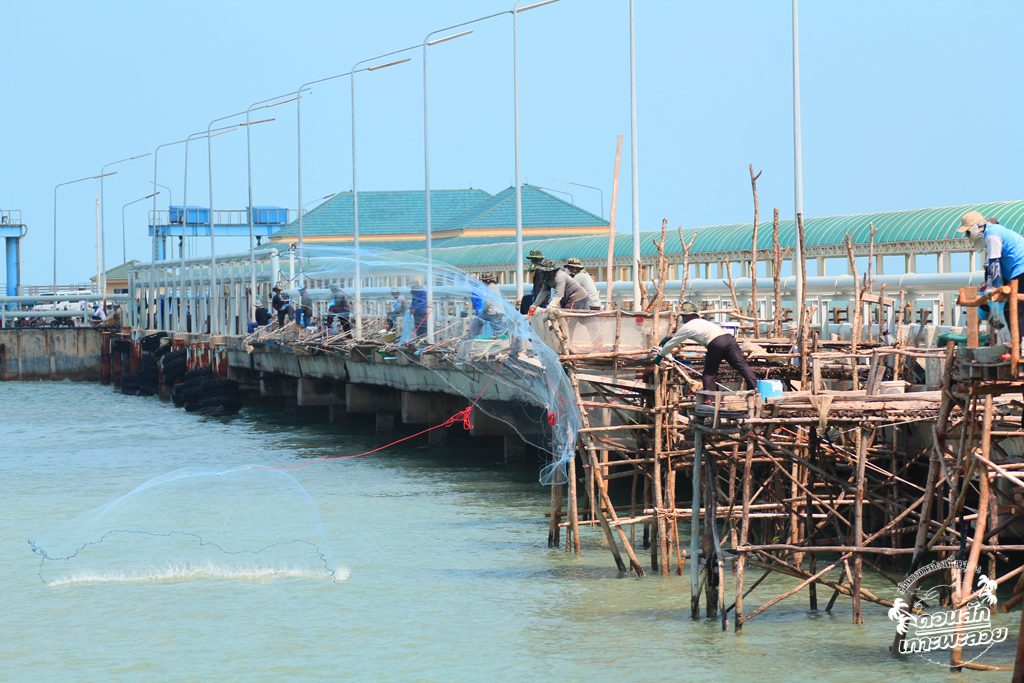

Fishing Dock
A pier for fishermen in Don Sak is like a long bridge reaching out into the sea. There are many fishermen waiting to unload their crabs, prawns, crayfish, fish, squids etc. before taking them to the market.
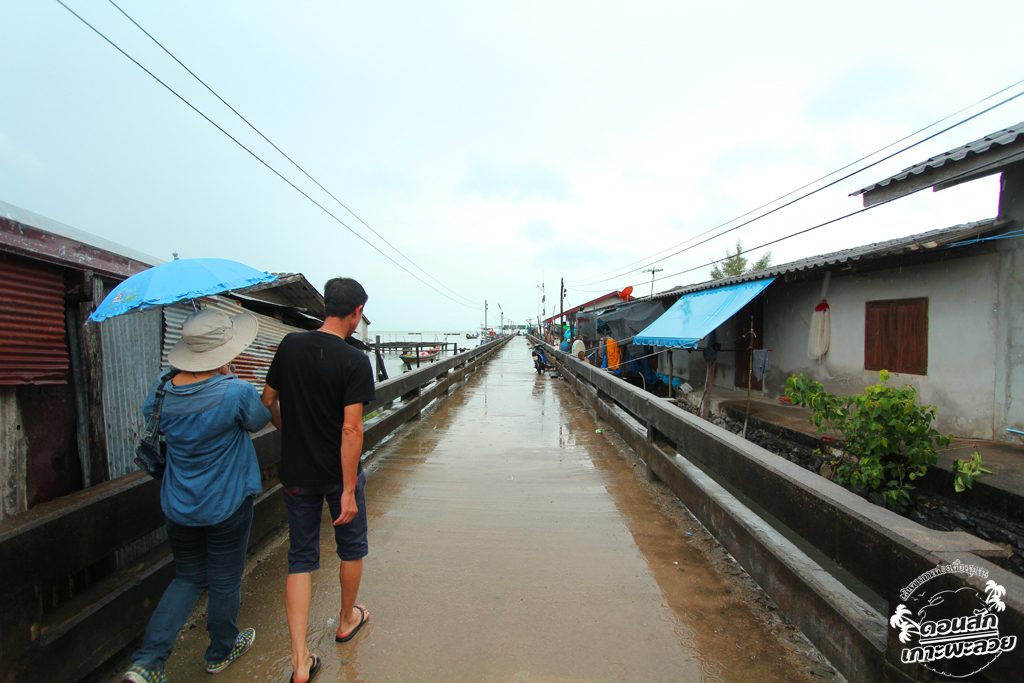

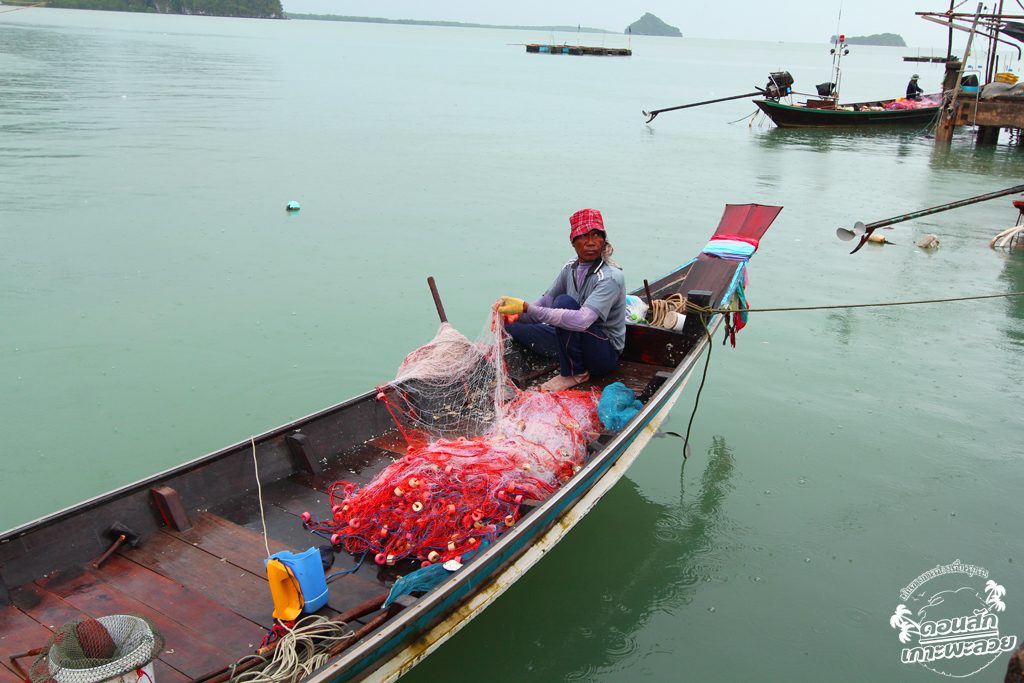
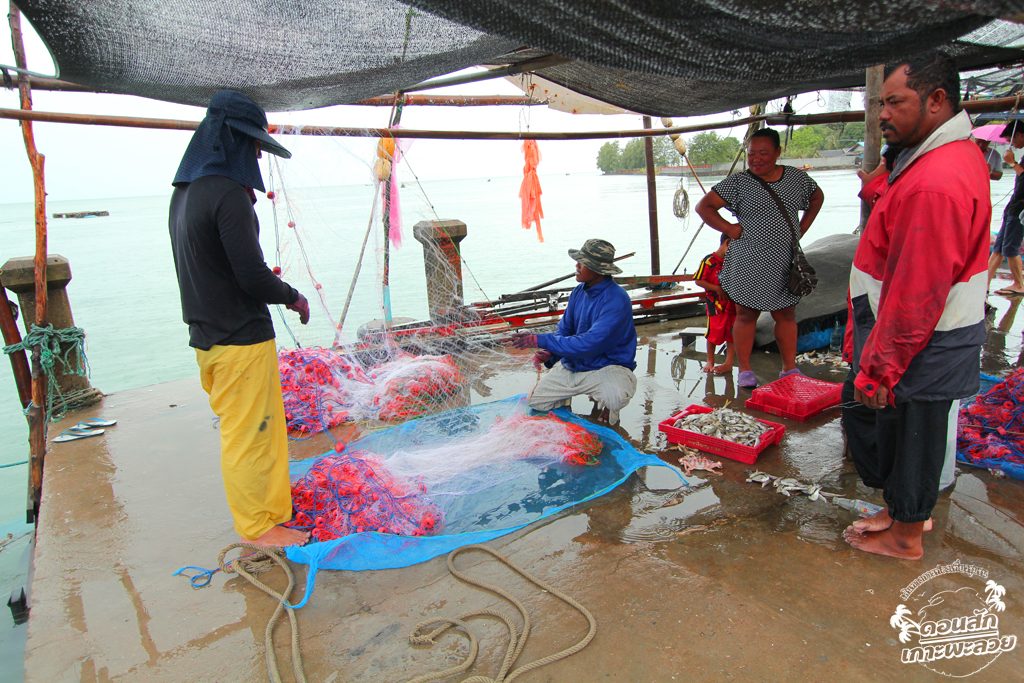
Mae Yai Arm Shrine
It is a sacred place where the people in Don Sak District pay respect and worship. The shrine is located on the Don Sak – Khanom route. People ask for good fortune in work or study, and loud firecrackers signal success.
